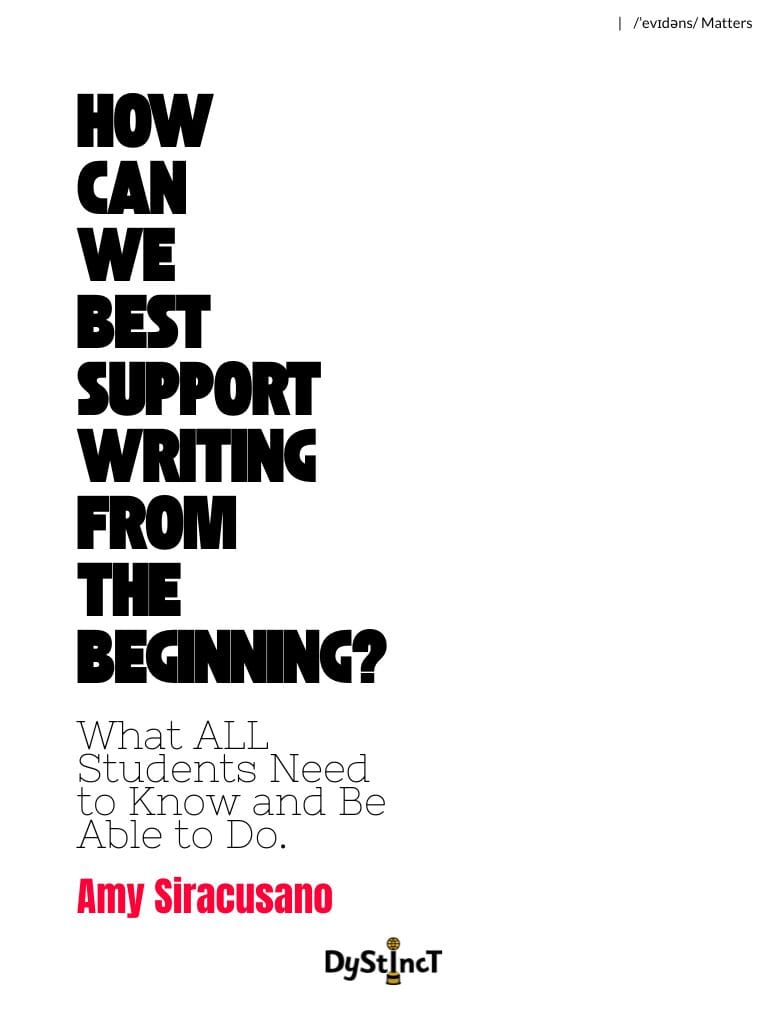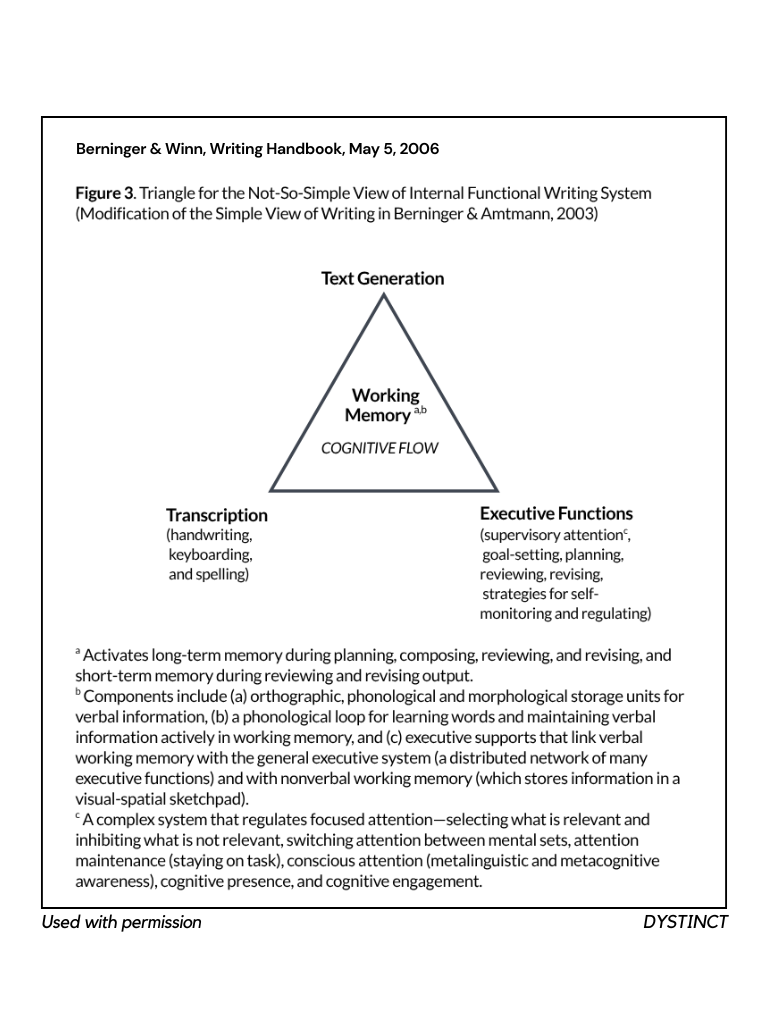
Issue 27: How Can We Best Support Writing from the Beginning? What ALL Students Need to Know and Be Able to Do | Amy Siracusano
Amy Siracusano offers research-based insights into the foundational writing skills students need to succeed, highlighting the importance of explicit instruction in transcription skills such as handwriting and spelling, along with early support for oral language and fine motor development.

Writing can be a daunting task for both students and educators because of its complexity. The well-researched theoretical model, titled “The Not So Simple View of Writing,” introduced by Berninger and Winn in 2006, has been around for almost 20 years. Yet many educators have never heard of it, nor have they read the research. Historically, teachers in the United States have taught writing using a writing workshop model. Teachers assign a writing task, model writing, and set students off to write. Published writing using this model requires that students utilize the writing process steps: planning, drafting, revising, editing, and publishing. Although the steps are explicitly modeled to support students in successfully completing writing pieces, many students struggle to implement them effectively due to weaknesses in foundational writing skills.
What Does the Research Say?
What Does the Research Say?
To be a strong writing teacher, it is essential to understand the research that informs evidence-based classroom practices. In 1981, Dr. Flower and Dr. Hayes studied the cognitive processes of composition with college-aged students rather than elementary, middle, or even high school students. They noted that, in their model, the cognitive processes weren’t linear but moved bidirectionally —generating, planning, translating, and reviewing. The concern with using this process is that for many students, the writing process - planning, translating/drafting, reviewing, and editing to create published works isn’t enough.
It’s important to note that Flower and Hayes’ model not only included the main components of the writing process but also emphasized working memory, long-term memory, and goal setting. Several of these processes were also included in Berninger and Winn’s 2006 model as well. Based on the updated research in 2006, the instructional focus needs to shift from solely using The Writing Process to support writers to focusing first on teaching the foundational writing skills necessary to develop proficient writers.

How Does the Not So Simple View of Writing Inform Instruction?
How Does the Not So Simple View of Writing Inform Instruction?
Berninger and Winn’s model, The Not So Simple View of Writing, indicates that proficient writing involves instructing students in two broad categories: transcription (foundational writing skills) and composition (text generation skills). Writing also involves both long-term and short-term working memory, also known as cognitive flow and executive functions (e.g., the ability to follow directions, stay focused on a task, and control one’s impulses). Many students get overwhelmed quickly when asked to complete a writing task, and it’s the responsibility of the educators in the classroom to support students and ensure success.
This post is for paying subscribers only
SubscribeAlready have an account? Log in


